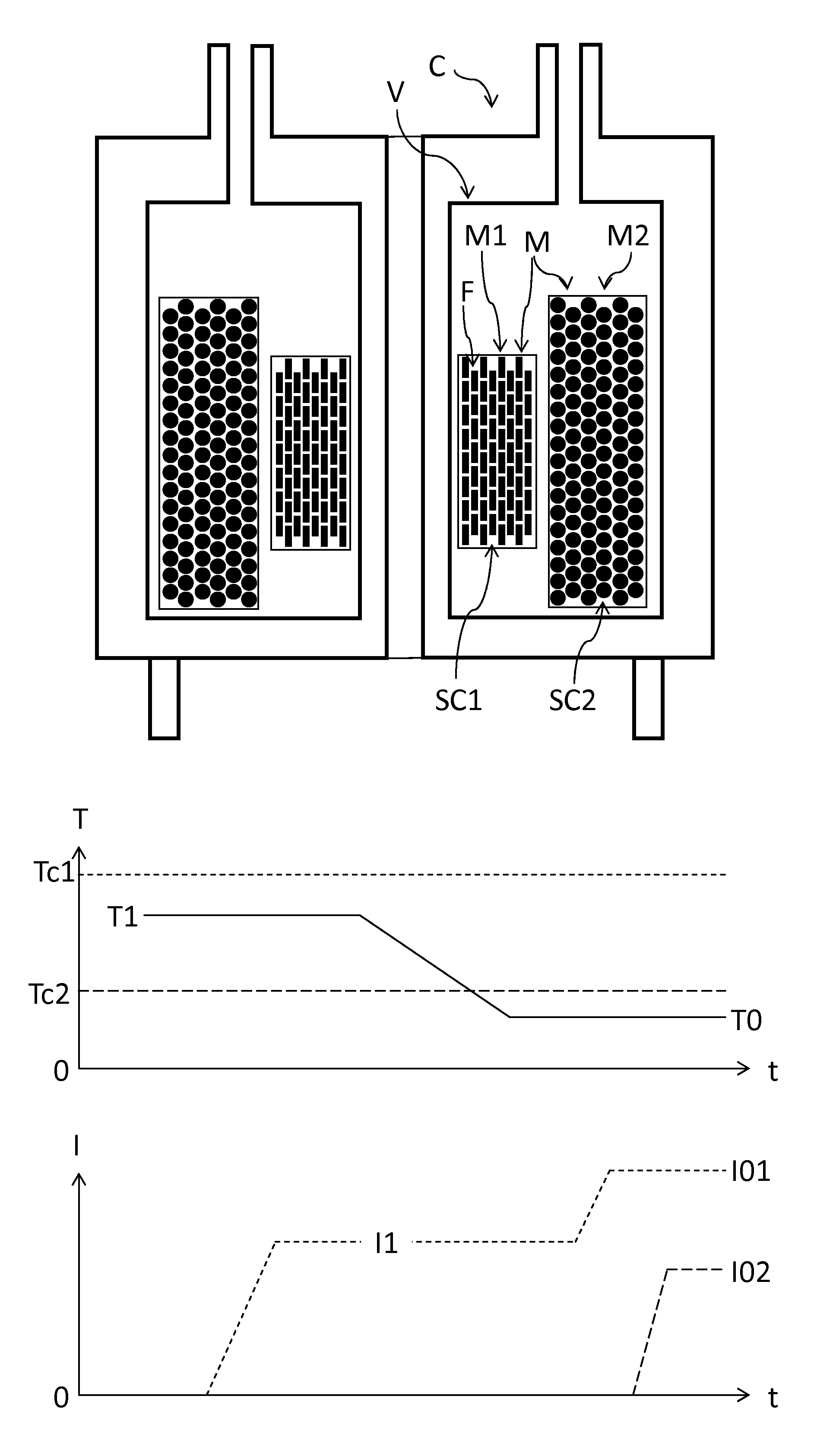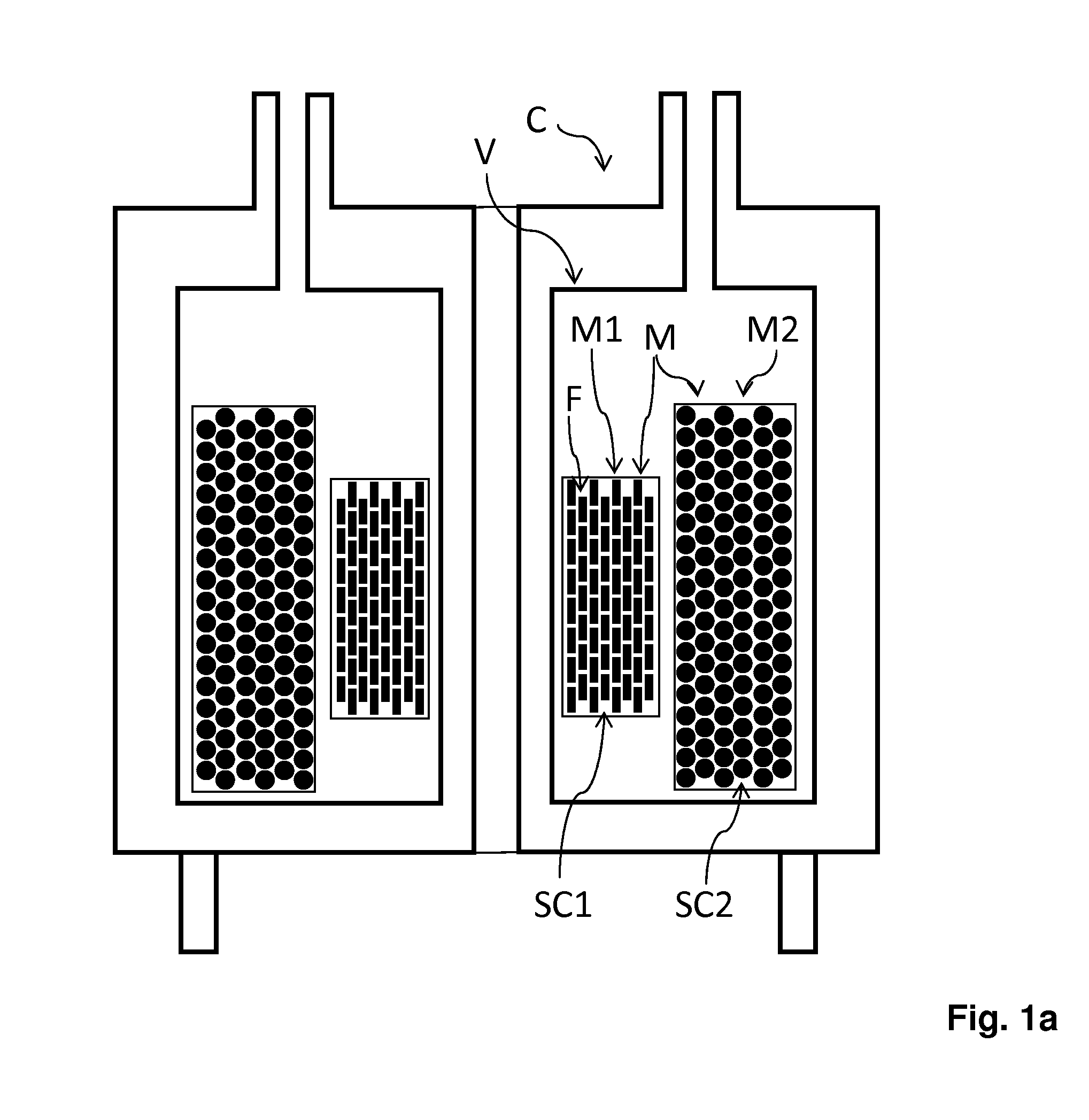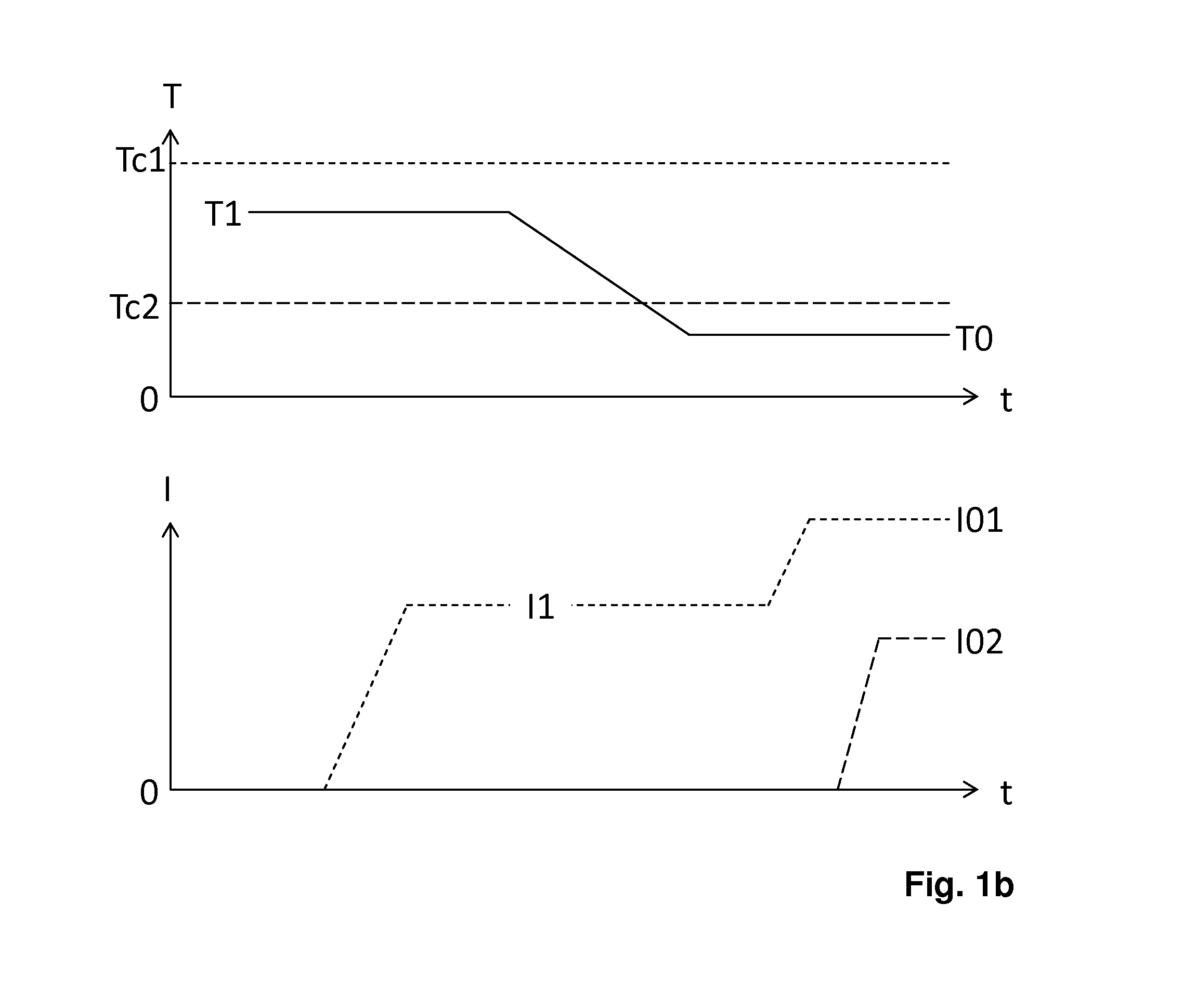Method for energizing a superconducting magnet arrangement
a superconducting magnet and arrangement technology, applied in the manufacture/treatment of superconducting devices, superconducting magnets/coils, magnetic measurements, etc., can solve the problems of reducing the field strength of the magnet arrangement, field inhomogeneities, field instability, etc., to simplify the targeted temperature controlling and simplify the target temperature controlling
- Summary
- Abstract
- Description
- Claims
- Application Information
AI Technical Summary
Benefits of technology
Problems solved by technology
Method used
Image
Examples
Embodiment Construction
[0061]FIG. 1a shows a schematic sectional representation of a superconducting magnet arrangement M for carrying out the method according to the invention. It comprises a first magnet winding M1 with a tape conductor F composed of a first superconductor material SC1 and a first transition temperature Tc1 and a second magnet winding M2 composed of a second superconductor material SC2 with a second transition temperature Tc2 at least 15 K below the first transition temperature Tc1.
[0062]The magnet arrangement M is disposed in a cryostat device C for cooling to a cryogenic operating temperature T0. The cooling of the magnet arrangement M to the operating temperature T0 or the temperature-controlling of the magnet arrangement M to a pre-operating temperature T1, T2 may take place by filling of a container V with a cryogenic liquid, for example liquid nitrogen or liquid helium.
[0063]As an alternative to this, FIG. 6 shows a cryostat device C with a cryocooler CC for cooling the magnet arr...
PUM
| Property | Measurement | Unit |
|---|---|---|
| transition temperature | aaaaa | aaaaa |
| temperature | aaaaa | aaaaa |
| temperature | aaaaa | aaaaa |
Abstract
Description
Claims
Application Information
 Login to View More
Login to View More - R&D
- Intellectual Property
- Life Sciences
- Materials
- Tech Scout
- Unparalleled Data Quality
- Higher Quality Content
- 60% Fewer Hallucinations
Browse by: Latest US Patents, China's latest patents, Technical Efficacy Thesaurus, Application Domain, Technology Topic, Popular Technical Reports.
© 2025 PatSnap. All rights reserved.Legal|Privacy policy|Modern Slavery Act Transparency Statement|Sitemap|About US| Contact US: help@patsnap.com



